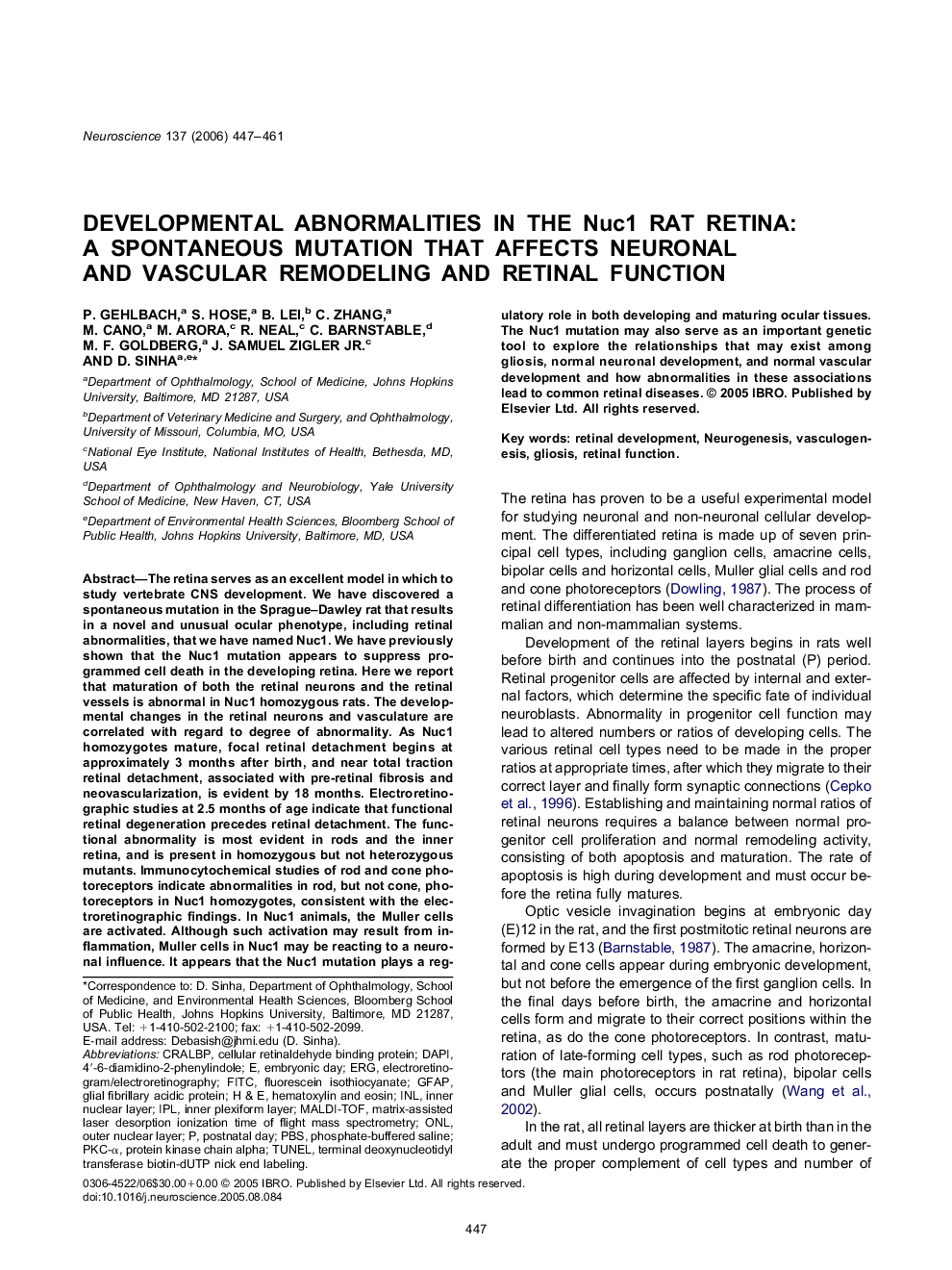| Article ID | Journal | Published Year | Pages | File Type |
|---|---|---|---|---|
| 4342841 | Neuroscience | 2006 | 15 Pages |
The retina serves as an excellent model in which to study vertebrate CNS development. We have discovered a spontaneous mutation in the Sprague–Dawley rat that results in a novel and unusual ocular phenotype, including retinal abnormalities, that we have named Nuc1. We have previously shown that the Nuc1 mutation appears to suppress programmed cell death in the developing retina. Here we report that maturation of both the retinal neurons and the retinal vessels is abnormal in Nuc1 homozygous rats. The developmental changes in the retinal neurons and vasculature are correlated with regard to degree of abnormality. As Nuc1 homozygotes mature, focal retinal detachment begins at approximately 3 months after birth, and near total traction retinal detachment, associated with pre-retinal fibrosis and neovascularization, is evident by 18 months. Electroretinographic studies at 2.5 months of age indicate that functional retinal degeneration precedes retinal detachment. The functional abnormality is most evident in rods and the inner retina, and is present in homozygous but not heterozygous mutants. Immunocytochemical studies of rod and cone photoreceptors indicate abnormalities in rod, but not cone, photoreceptors in Nuc1 homozygotes, consistent with the electroretinographic findings. In Nuc1 animals, the Muller cells are activated. Although such activation may result from inflammation, Muller cells in Nuc1 may be reacting to a neuronal influence. It appears that the Nuc1 mutation plays a regulatory role in both developing and maturing ocular tissues. The Nuc1 mutation may also serve as an important genetic tool to explore the relationships that may exist among gliosis, normal neuronal development, and normal vascular development and how abnormalities in these associations lead to common retinal diseases.
